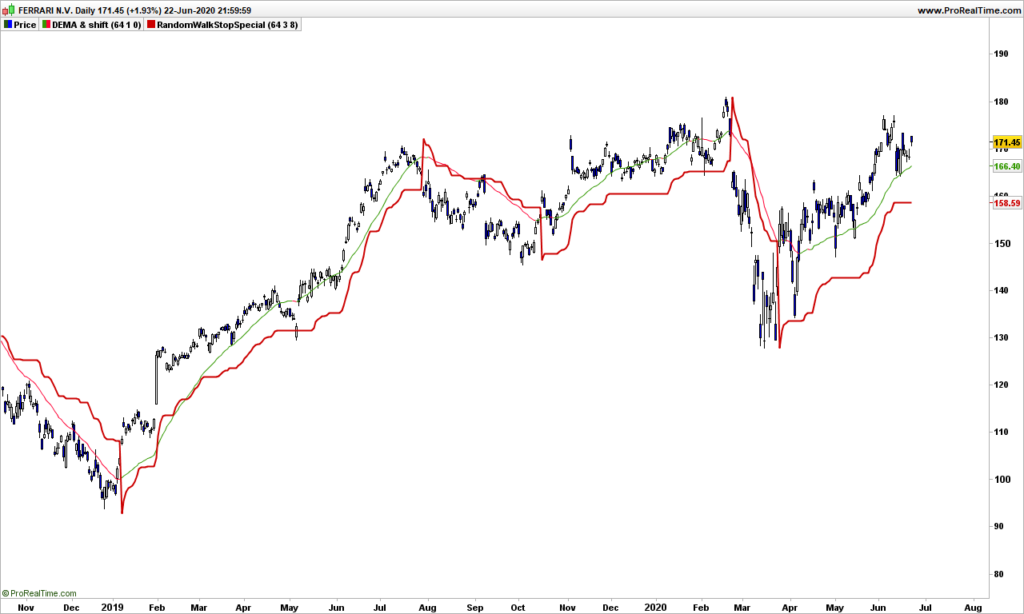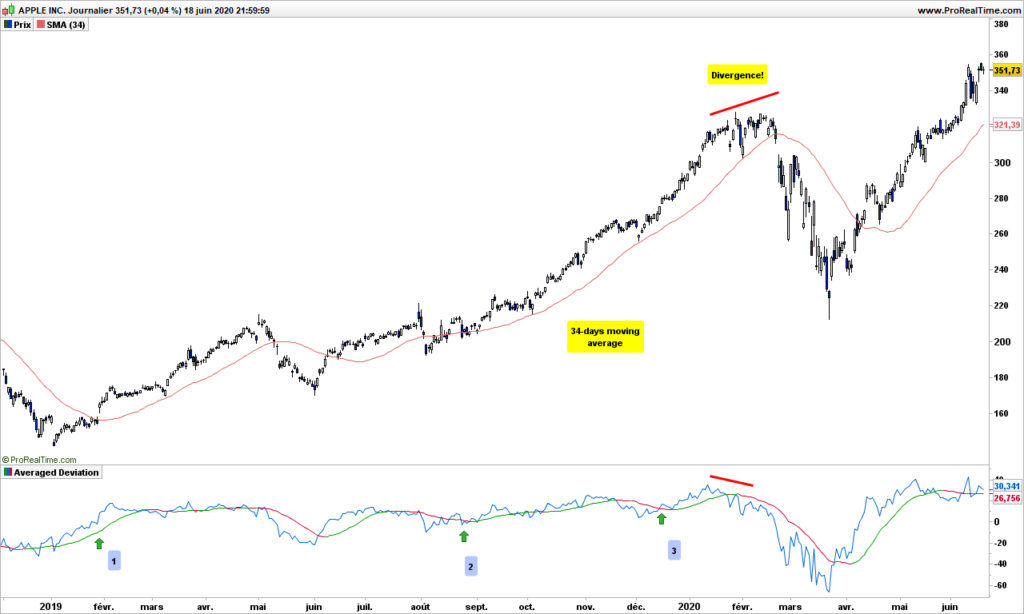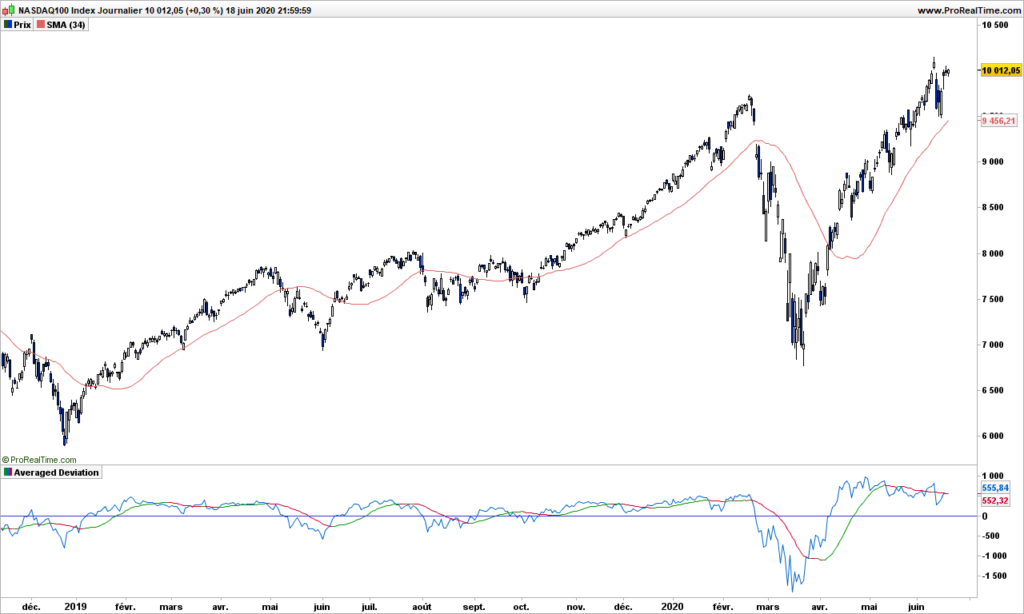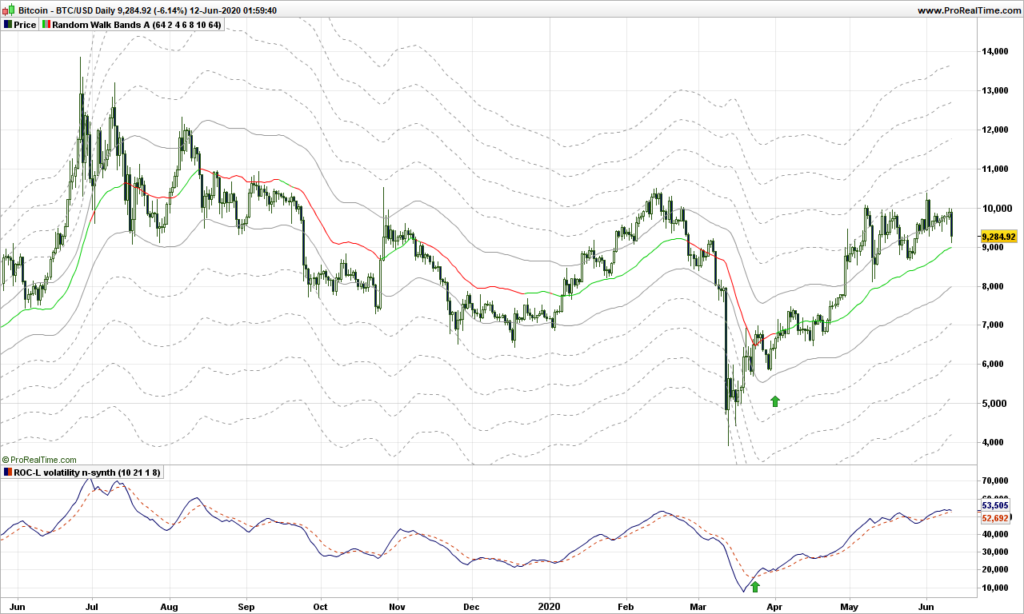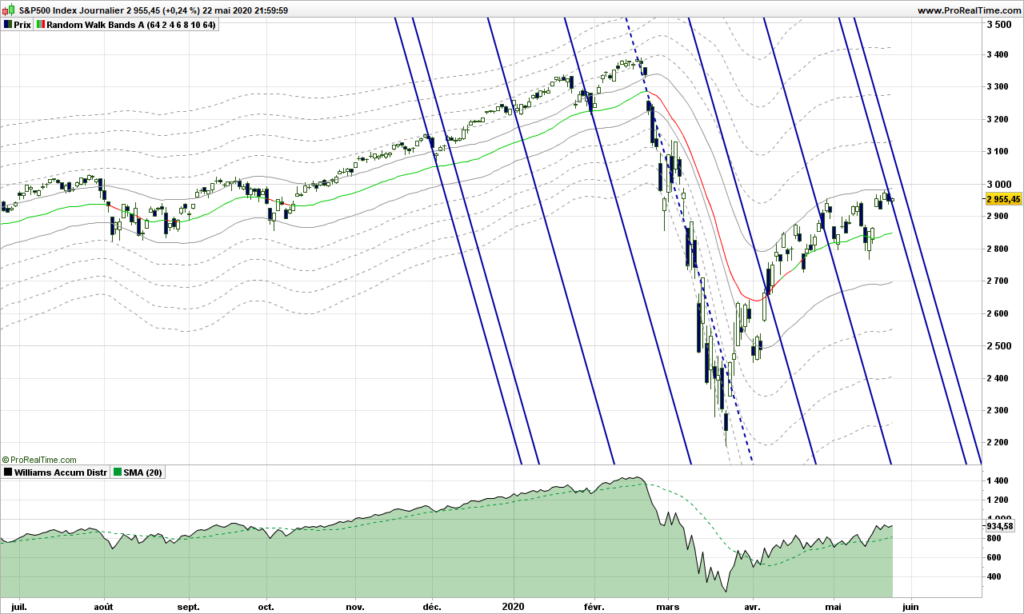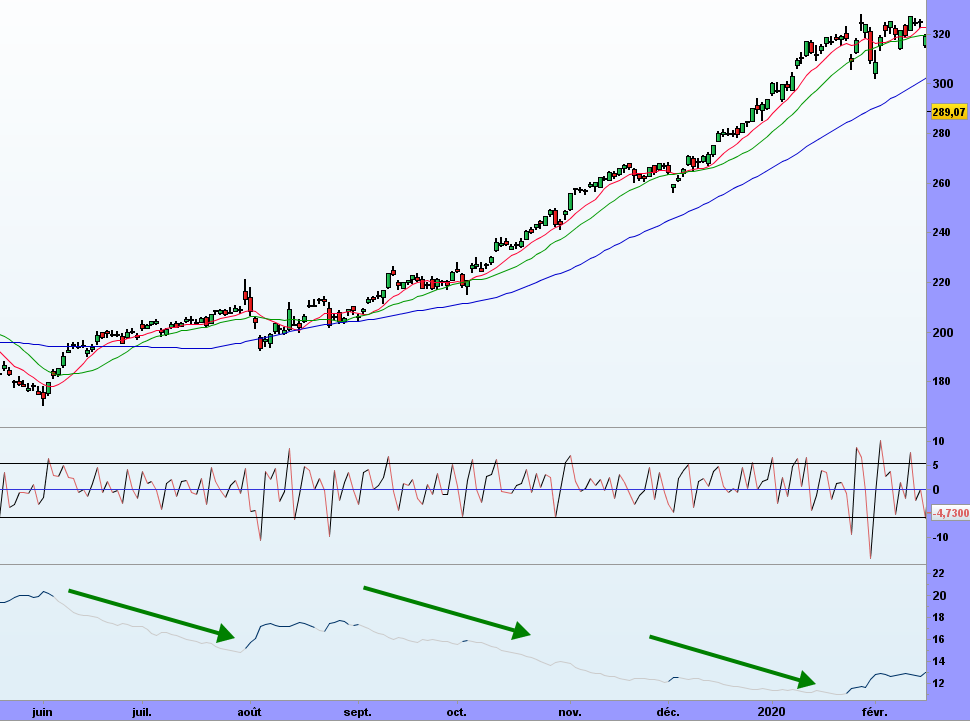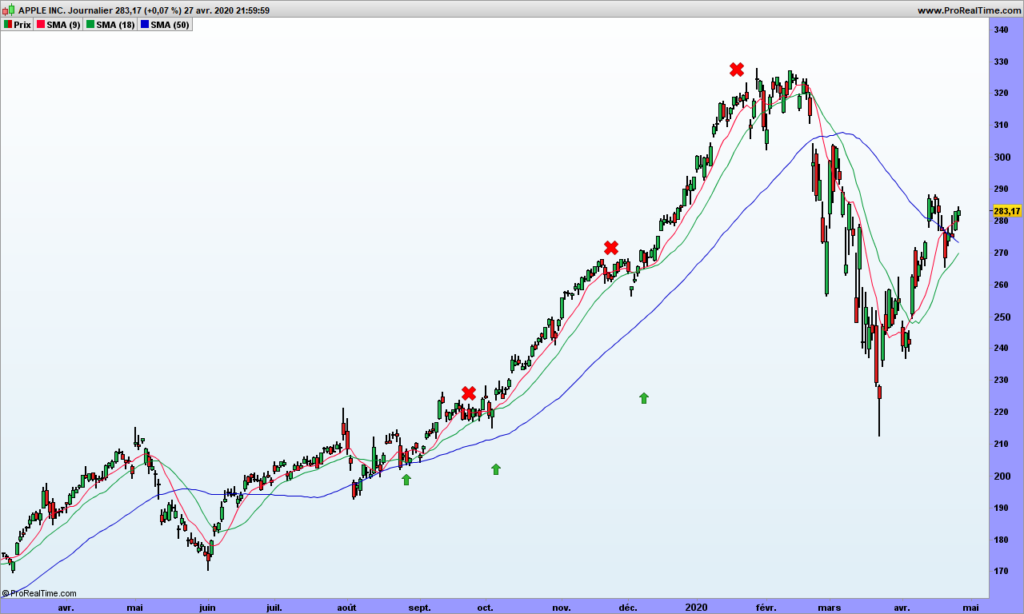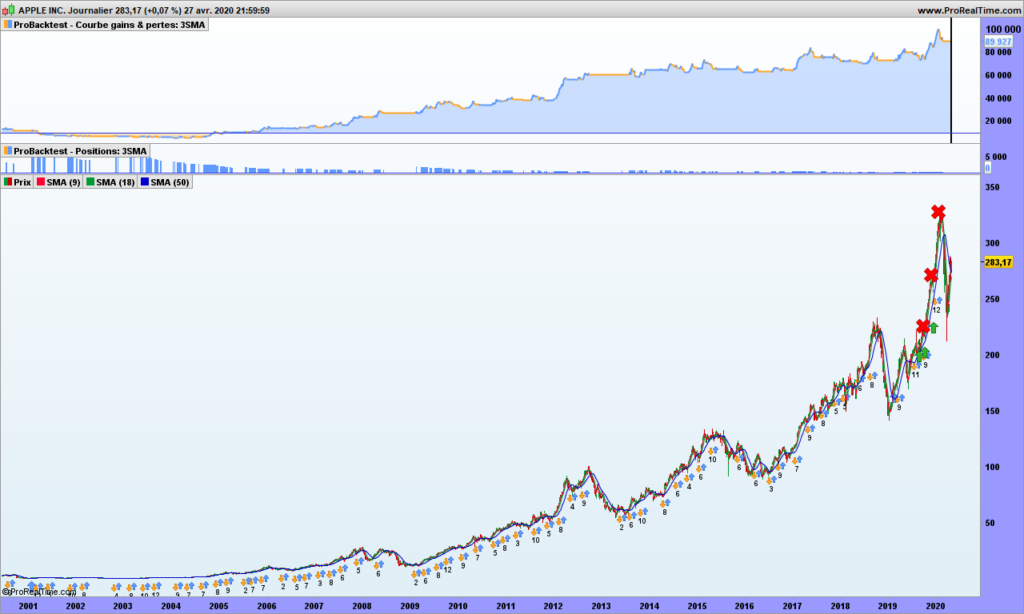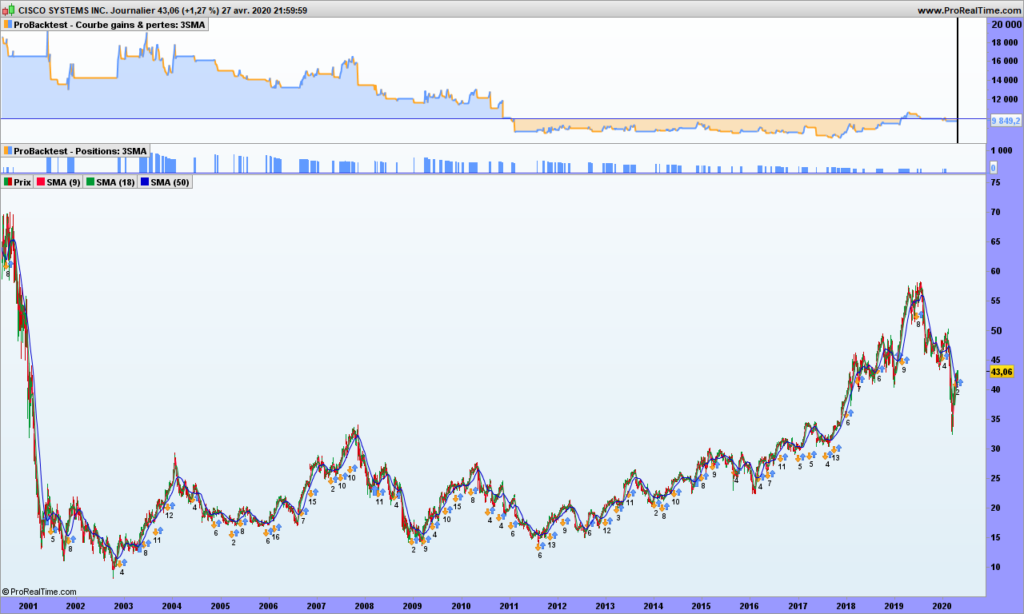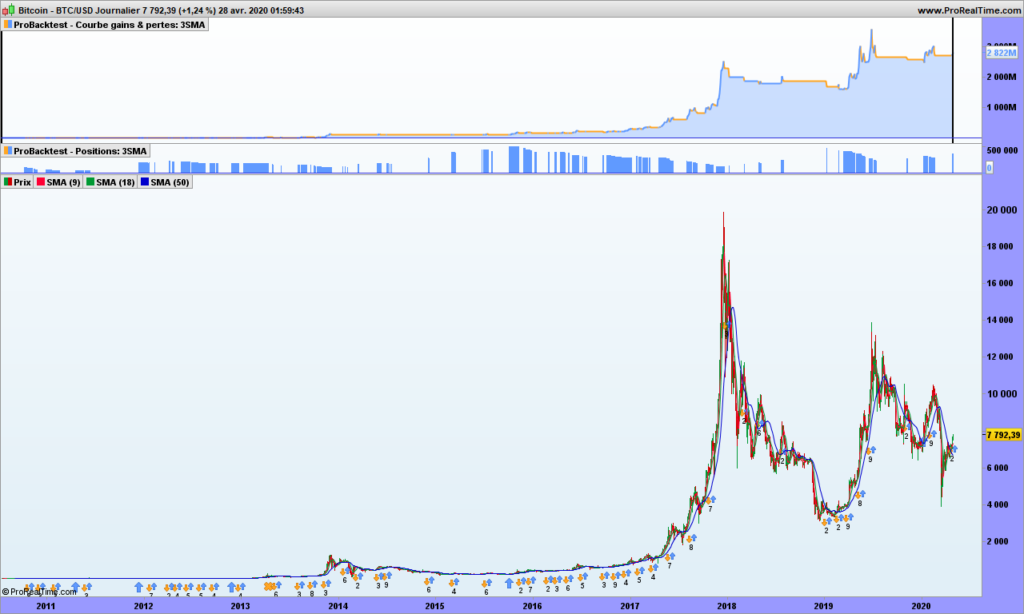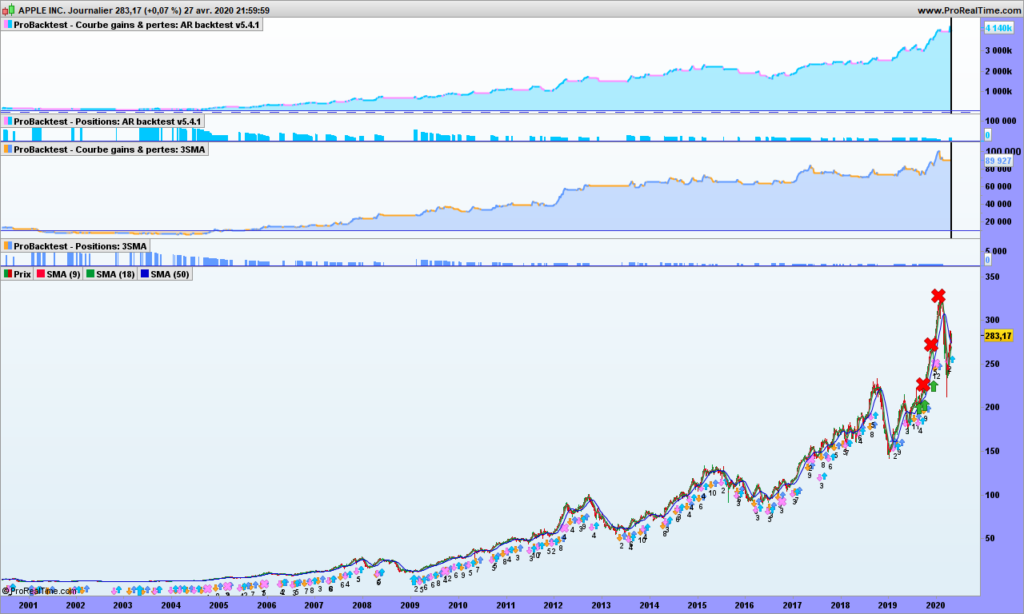Even if you are not interested in car business, there is a good chance that you have seen at least once a Ferrari drive by, and because of its specific engine noise and design, you wished to be able to drive it even for a few minutes. I had the chance to drive one for 20 minutes once, it was an incredible experience!

Anyway, let’s go to today’s topic, and see if there is any Ferrari like tool for trading, and to add for the fun, we will look at Ferrari graph! Think about their business: when you order a Ferrari, you will not be delivered before end of 2021 and you need to pay … now! Those interested in fundamentals should be looking on this stock! And so should you… and get a little piece of Ferrari!
Before we continue, remember that a Ferrari works fine in nice long roads, but it will be a painful drive if the road is bumpy with dangerous bends every quarter of mile!
DEMA – Double Exponential Moving Average – is for those traders interested in taking the fast lane. I colored it green when going northward, and red when going southward. As you can see, we have a good indication of the trend!

For those interested, the formula of DEMA is as follows. It is in short an EMA that is corrected for delay. So you can and MUST use long averages, don’t use 10-days DEMA, it doesn’t make sense!
DEMA = 2 x EMA – EMA(EMA)
Using DEMA as a stop is not best idea you may have since prices may jump above and below the hood, so you need to add a bumper, sorry a stop! Here you go:
Last but not least, you do not want to enter too far away from DEMA. Remember my random walk path? DEMA is not the same of course, but let’s check if price are not going too far away from this path! For those who know, it is a Keltner channel with DEMA as central average!
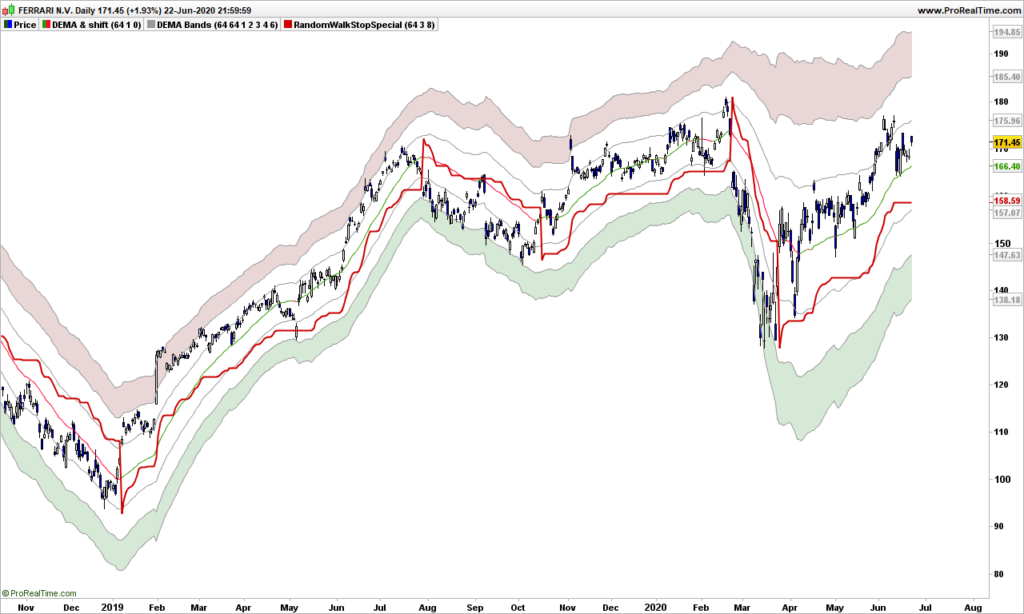
Wonderful! Prices are not going more than 8 ATR’s away from DEMA! I colored the zone between 6 and 8 ATR’s away from DEMA (don’t enter in red zone!) now the landscape is plain visible, provides a good idea of the direction, the stop prevents you from falling in ditches.
As previously said, do not use this Ferrari on small country roads, your portfolio will end up in a ravine sooner or later!
That’s it. Until next time, trade safely!

